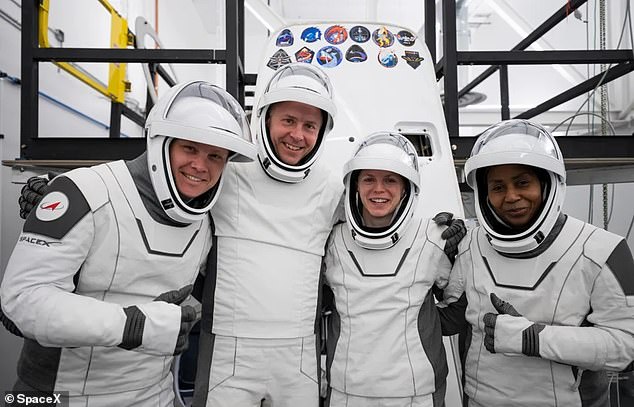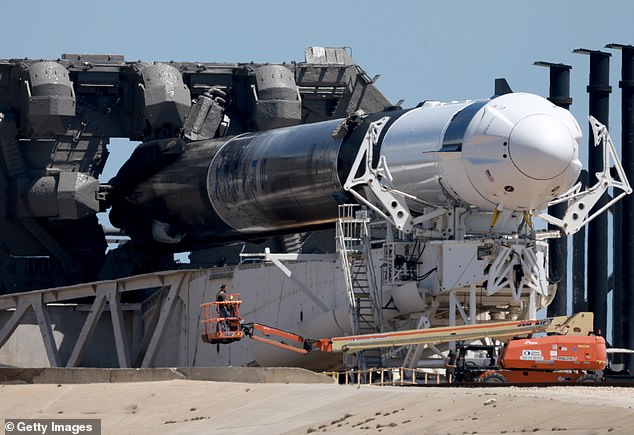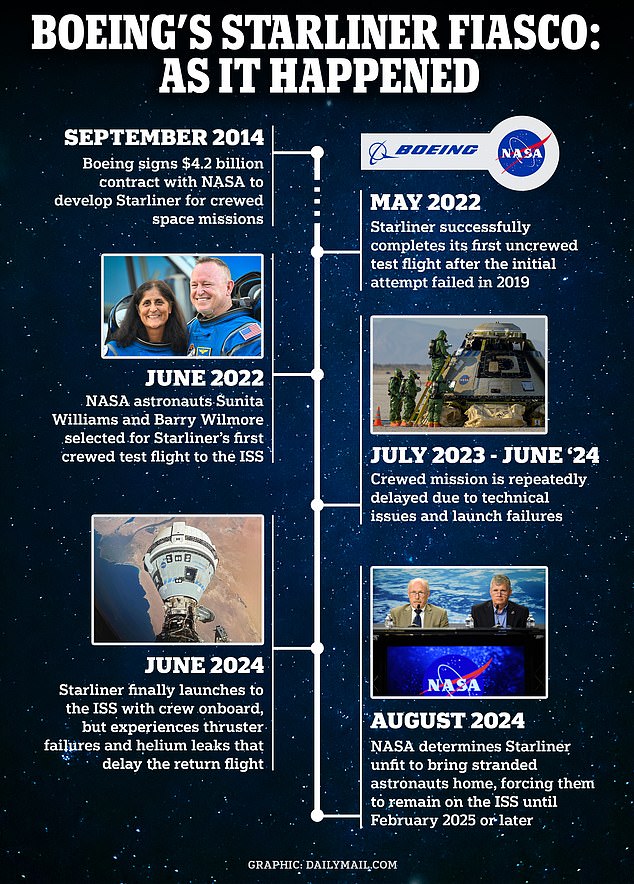Mission to rescue Boeing’s stranded astronauts suffers another blow
NASA has changed its flight plans in preparation for a SpaceX mission to retrieve stranded astronauts from the International Space Station (ISS), and has removed two crew members from the trip.
SpaceX Crew-9 will now only conduct a two-man mission to the ISS to retrieve the stranded Boeing Crew, Butch Wilmore and Suni Williams, who have been stuck in space for eight months.
Zena Cardman and Stephanie Wilson will no longer fly on the mission, but are “eligible for redeployment on a future mission,” NASA announced on Friday.
Despite the fact that the two NASA astronauts are returning to Earth, ditching Cardman and Wilson puts a dent in Crew 9’s mission, as they “are trained as a crew of four,” NASA chief astronaut Joe Acaba said in a statement.
NASA astronaut Nick Hague and Russian cosmonaut Aleksandr Gorbunov will continue the mission as commander and mission specialist, respectively.
The two Americans were kicked out in favor of the Russian crew member to honor an agreement with Roscosmos to have one Russian astronaut, “who can operate their critical systems for continued, safe station operations,” fly on each SpaceX flight, NASA said. In return, the U.S. gets seats on the Soyuz spacecraft.
SpaceX Crew-9 will now only conduct a two-man mission to the ISS to retrieve the stranded Boeing Crew, Butch Wilmore and Suni Williams, who have been stuck in space for eight months
The flight is expected to depart in February 2025, five months later than the original September 24 launch.
While Acaba acknowledges that it will be an adjustment for the crew, he has “complete confidence in our entire crew, who have done an excellent job training for the mission.”
“Zena and Stephanie will continue to help their crewmates in preparation for launch and they are an example of what it means to be a professional astronaut,” he said.
The two female astronauts have no problem with it and both say they are confident the two men will do just fine.
“I have every confidence that Nick and Alex will perform their roles extremely well,” said Cardman, a scientist.

NASA astronaut Nick Hague and Russian cosmonaut Aleksandr Gorbunov will continue the mission as commander and mission specialist, respectively. The flight is expected to launch in February 2025, five months later than the original Sept. 24 launch.

Zena Cardman and Stephanie Wilson will no longer fly on the mission, but are “eligible for redeployment to a future mission,” NASA announced Friday (pictured left: Gorbunov, Hague, Cardman and Wilson)
Hague has now been in space for 203 days and this will be his third launch and second mission to the ISS, NASA said.
He also completed a development internship with the DOD Space Force, where he served as director of test and evaluation from 2020 to 2022. He then returned to NASA, where he worked on the Boeing Starliner program.
For Gorbunov, on the other hand, this is his first space trip.
Once the pair reach the ISS, they will become crew members of Expedition 72, where they will join Wilmore and Williams, among others, to conduct scientific research and maintenance activities, NASA said.
Wilmore and Williams were stuck on the ISS because their Boeing ship malfunctioned and multiple attempts to bring them home failed. One of the attempts was to send them back on the ship that had stranded them.

Wilmore and Williams were stuck on the ISS because their Boeing ship malfunctioned and several attempts to bring them home also failed. One of the attempts was to send them back on the ship that had stranded them. (Pictured: a SpaceX spacecraft)

A complete timeline of Boeing’s Starliner program, from the singing of their giant contact to the incident that left two astronauts stranded aboard the ISS
Ultimately, NASA decided that the risk of a fatal accident was too high to bring the astronauts home on the Starliner.
Boeing officials helped make the decision, but did not necessarily agree with it.
“Boeing engineers believe the capsule is completely safe and that they can safely return the crew home if necessary.”
NASA looked at the same test data again, but they concluded, “We just don’t have enough confidence.”
It remains to be seen what impact this decision will have on the relationship between NASA and Boeing.
